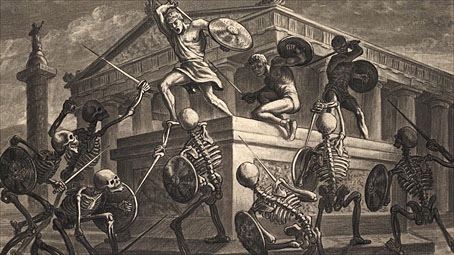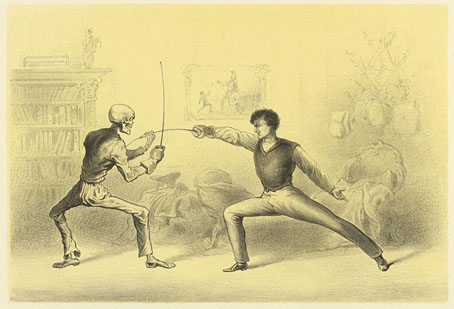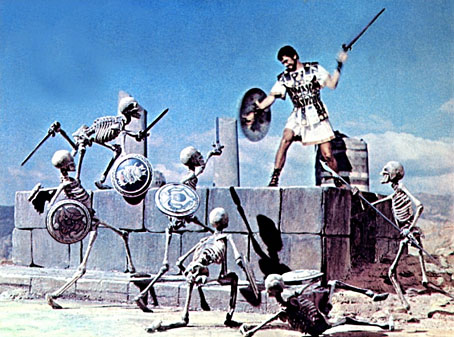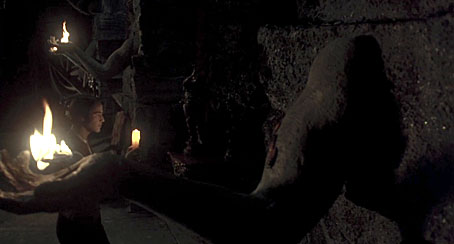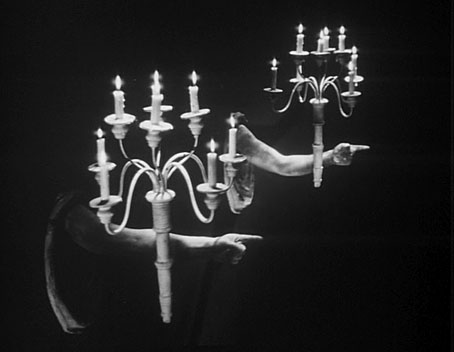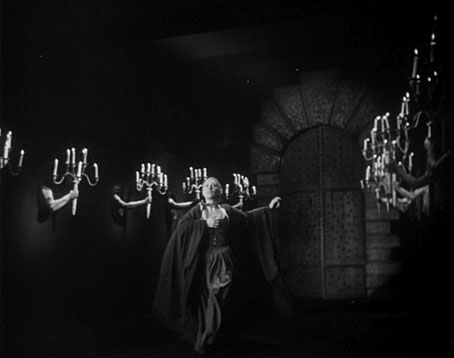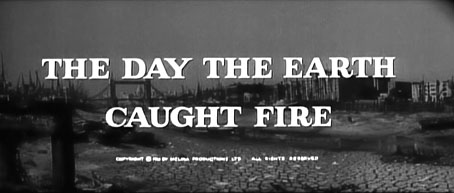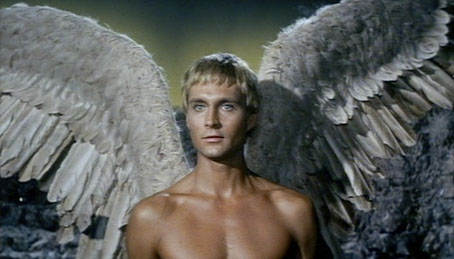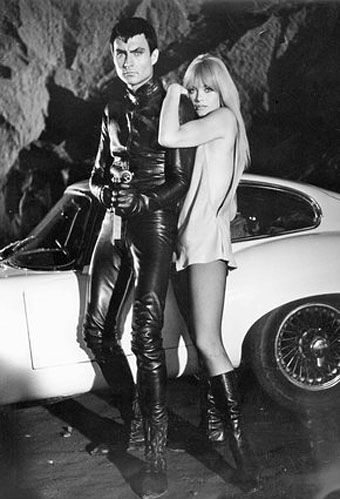Concept art for Jason and the Argonauts (1963).
He could also draw, something the obituaries won’t necessarily mention. I wasn’t aware of Ray Harryhausen’s many detailed preliminary drawings until I had the good fortune to see him give a talk at the Preston SF Group in the early 1990s. I recall mention being made of Gustave Doré as an influence, something that wasn’t so surprising given that Harryhausen’s animation career began with Willis O’Brien, animator of the original Kong. The Skull Island sets for King Kong owed much to Doré’s illustrations, and the film also made use of equally detailed preliminary drawings by O’Brien, Byron Crabbe and Mario Larrinaga.
I was going to link to Jason and company’s celebrated fight with the skeletons but the only clips on YouTube at the moment lack Bernard Herrmann’s superb score. The Harryhausen/Schneer films always had low budgets but the producers understood the importance of music, and employed Herrmann on four of their films: The 7th Voyage of Sinbad (1958), The Three Worlds of Gulliver (1960), Mysterious Island (1961) and Jason and the Argonauts (1963). Miklós Rózsa provided the score for The Golden Voyage of Sinbad (1974) so here’s a favourite moment from that film with John Philip Law and Martin Shaw tackling Tom Baker’s sword-wielding Kali statue.
Ray Harryhausen’s production drawings can be seen in The Art of Ray Harryhausen (2005).
Previously on { feuilleton }
• Swords against death

